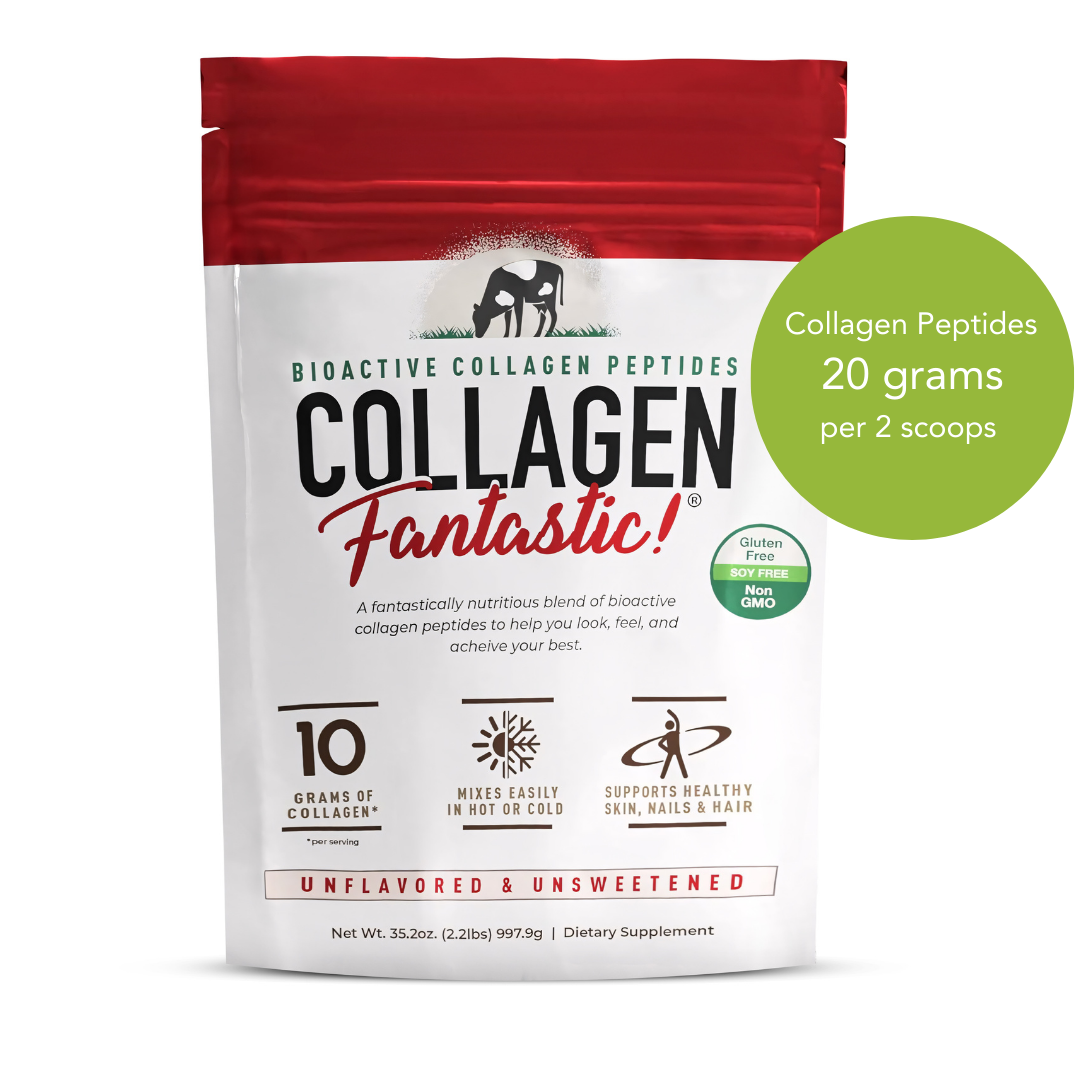Key Takeaways
-
After 40, your body can still build muscle and strength — it just needs a smarter, more intentional approach.
-
Strength training improves metabolism, bone density, joint health, and energy levels.
-
The biggest mistakes midlife lifters make are doing too much cardio, not lifting heavy enough, and neglecting recovery.
-
Focus on compound movements, good form, progressive resistance, and consistent recovery nutrition.
-
Fantastic Nutrition Whey Protein, Collagen Fantastic, and Creatine Fantastic support the strength and recovery process at every stage.
Introduction: Strength Doesn’t Have an Expiration Date
Many people assume strength peaks in their 20s and fades after 40. The truth?
You can build — and maintain — remarkable strength, energy, and muscle tone well into your 50s, 60s, and beyond.
The difference isn’t what your body can do — it’s how it responds. Hormonal changes, stress, and recovery demands shift with age, which means your training and nutrition need to shift too.
The good news is that your body still adapts beautifully. With the right approach, you can feel stronger, move better, and perform at your best for decades to come.
Why Strength Training Matters More After 40
At this stage of life, strength isn’t just about lifting weights — it’s about maintaining vitality, independence, and long-term health.
Here’s what consistent strength training does for you:
-
Preserves Lean Muscle Mass:
Muscle naturally declines with age (about 3–8% per decade after 30). Lifting weights tells your body to keep it — or rebuild it. -
Boosts Metabolism:
Muscle tissue burns more calories at rest than fat. More muscle = a faster metabolism, even when you’re not moving. -
Protects Bone Health:
Resistance training stimulates bone density, helping prevent osteoporosis and fractures. -
Supports Joint Stability and Balance:
Strengthening surrounding muscles reduces stress on joints and lowers injury risk. -
Improves Mental Clarity and Mood:
Exercise increases blood flow, releases endorphins, and supports cognitive health — especially critical as stress levels rise with age.
Strength is longevity. The more you have, the better you live.
Principle #1: Train Movements, Not Just Muscles
The most effective workouts for adults over 40 are built around functional strength — movements that mimic real life and engage multiple muscle groups.
Instead of isolating muscles, think in terms of patterns:
-
Push (chest, shoulders, triceps)
-
Pull (back, biceps)
-
Hinge (glutes, hamstrings)
-
Squat (legs, core)
-
Carry (stability and coordination)
These compound movements improve coordination, efficiency, and full-body strength — helping you move powerfully and safely in everyday life.
Example exercises: squats, lunges, deadlifts, rows, presses, and loaded carries.
Principle #2: Prioritize Form and Control
At 25, you might have powered through a workout on adrenaline. At 45, you’ll get more results by moving with precision.
Proper form isn’t just about safety — it’s about efficiency. Muscles respond best when you train them through a full, controlled range of motion.
-
Slow down your reps. Feel the muscle work.
-
Don’t sacrifice control for heavier weight.
-
Engage your core and breathe through the movement.
Quality beats quantity every time — especially if your goal is lasting strength.
Principle #3: Embrace Progressive Resistance
Your body adapts to what you ask of it. The only way to keep improving is to gradually increase resistance — a concept called progressive overload.
That doesn’t mean adding plates every week. It can mean:
-
More weight
-
More reps
-
Better technique
-
Shorter rest periods
The key is steady progression without burnout. Listen to your body, push your limits carefully, and trust that small increases compound over time.
This is where Creatine Fantastic can make a real difference. By combining 5g of Creapure® creatine with 3g of myHMB®, it helps your muscles adapt faster, perform harder, and recover stronger — without fatigue or overtraining.
Principle #4: Recovery Is Half the Workout
Recovery isn’t downtime — it’s the period where growth happens. Without it, you risk injury, stagnation, and frustration.
Make recovery intentional:
-
Sleep 7–9 hours a night.
-
Stay hydrated — muscle tissue is 75% water.
-
Schedule at least one rest day weekly.
-
Incorporate mobility work and light cardio between lifting sessions.
Nutrition and supplementation matter, too.
-
Whey Protein provides the amino acids needed to rebuild muscle tissue.
-
Collagen Fantastic strengthens connective tissues and joints.
-
Creatine Fantastic replenishes energy stores and reduces muscle breakdown.
These nutrients complement your training — supporting repair, reducing soreness, and keeping you consistent.
Principle #5: Don’t Fear Intensity — Just Manage It Wisely
Too many people in their 40s and 50s train cautiously, worried about injury or exhaustion. But intensity (done correctly) is what keeps your body responsive and adaptable.
You don’t need to train to failure — you just need to challenge yourself.
Use weights that feel moderately heavy by the last few reps, rest just enough to maintain form, and finish feeling strong, not wrecked.
Intensity without recklessness is the sweet spot for long-term progress.
Principle #6: Strength Is More Than Muscle
Physical strength is only one piece of the puzzle. True strength after 40 includes resilience — emotional, mental, and physical.
Training provides structure, discipline, and confidence that carries into every part of life. It’s not about chasing old personal records — it’s about redefining what your best feels like now.
Focus on consistency, not perfection. You don’t need to move like you’re 25; you just need to move — often, intentionally, and with purpose.
Putting It All Together: The Mindset of Strength
-
Train for life, not for the mirror.
Strength is the foundation of independence and vitality. -
Progress slowly, recover deeply.
Every gain is earned during recovery. Respect the process. -
Fuel your effort.
Undereating is the hidden enemy of strength. Feed your body with quality protein and balanced nutrition. -
Stay curious and patient.
Your body changes, but so does your capability. Strength after 40 is about potential, not limitation.
When you train smarter, not harder, you’ll not only look stronger — you’ll feel it in everything you do.
Frequently Asked Questions
1. Can I really build muscle after 40?
Absolutely. With resistance training, proper nutrition, and adequate recovery, your body can build new muscle tissue at any age. It may take more consistency, but the results are lasting.
2. How often should I strength train?
Aim for 3–4 sessions per week, with at least one rest or active recovery day between them. Recovery supports muscle growth as much as the training itself.
3. What should I eat to support strength gains?
Prioritize protein (0.8–1.0 grams per pound of body weight), balanced carbohydrates, and healthy fats. Whey Protein and Collagen Fantastic are easy, clean ways to hit your protein goals.
4. Is creatine safe for adults over 40?
Yes. Creatine Fantastic, which combines Creapure® creatine and myHMB®, is clinically tested, safe, and highly effective for maintaining muscle, strength, and energy in adults of all ages.
The Bottom Line
Building strength after 40 isn’t about chasing youth — it’s about reclaiming vitality.
When you train with intention, recover fully, and fuel your body well, you’ll gain not just muscle, but confidence, energy, and independence that lasts.
Fantastic Nutrition Whey Protein, Collagen Fantastic, and Creatine Fantastic form the foundation of that journey — helping you recover faster, move better, and stay strong for life.











